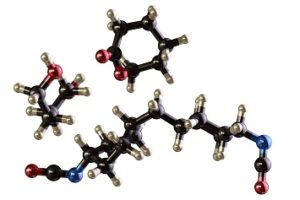In a move that could take the momentum out of state efforts to regulate diisocyanates, the Occupational Safety and Health Administration (OSHA) and the American Chemistry Council (ACC) reached an agreement to limit exposure to these chemicals in the workplace. How will this affect your operations?
Who’s Affected?
Isocyanates are the raw materials that make up all polyurethane products. Numerous facilities are affected by this new alliance. According to OSHA, jobs that may involve exposure to isocyanates include painting, foam-blowing, and the manufacture of many polyurethane products, such as chemicals, polyurethane foam, insulation materials, surface coatings, car seats, furniture, foam mattresses, under-carpet padding, packaging materials, shoes, laminated fabrics, polyurethane rubber, and adhesives, as well as during the thermal degradation of polyurethane products.
The most widely used compounds are diisocyanates, which contain two isocyanate groups.
Health Effects
Health effects of isocyanate exposure include irritation of skin and mucous membranes, chest tightness, and difficult breathing. Isocyanates include compounds classified as potential human carcinogens and known to cause cancer in animals. The main effects of hazardous exposures are occupational asthma and other lung problems, as well as irritation of the eyes, nose, throat, and skin.
The major route of occupational exposure to isocyanates is inhalation of the vapor or aerosol. Exposure may also occur through skin contact during the handling of liquid isocyanates. Occupational exposure normally occurs during the production and use of isocyanates—particularly during the mixing and foaming processes in the polyurethane foam industry. Exposures to airborne isocyanates may also occur from the melting or burning of polyurethane foams during firefighting.
Emphasis on Training
The new alliance with ACC will develop information, guidance, and training particularly aimed at exposure to aliphatic (Hexamethylene diisocyanate (HDI), methylene dicyclohexyl diisocyanate (HMDI), and isophorone diisocyanate (IPDI)) and aromatic (Methylene diphenyl diisocyanate (MDI) and Toluene diisocyanate (TDI)) diisocyanates.
A focus of the alliance is to develop and conduct effective Web-based training to educate employers and workers on safe use and handling when working with diisocyanates, specifically potential routes of exposure to downstream users that will be shared with OSHA personnel and other industry safety and health professionals and incorporate learning evaluations to ensure training is effective.
Current Best Practices
While industry awaits the training and communication tools the new alliance intends to develop, there are steps environment, health, and safety (EHS) managers can take now. Current best practices for reducing workplace exposure to diisocyanates include both administrative, work practices, and engineering controls.
1. Substitution. When feasible, substitute a less hazardous material for diisocyanates.
2. Engineering controls. Closed systems and ventilation can prevent both respiratory and skin exposures to diisocyanates.
3. Work practices. Effective work practices include:
- Isolating workers from the process—one example is having the workers inside a control booth;
- Controlling access to areas where diisocyanates are present;
- Rotating worker schedules to minimize exposures;
- Good housekeeping, such as controlling the accumulation of diisocyanates on surfaces and equipment both within and outside of the work area—for example, in break rooms; and
- Develop and implement a cleaning schedule or documented pattern of housekeeping practices that will prevent exposures to diisocyanates.
4. Personal protective equipment (PPE). Diisocyanate exposure can cause dermatitis. In addition, a worker protected against inhaling diisocyanates may develop respiratory problems as a result of skin exposure to the chemical, so PPE should include:
- Protective clothing that prevents contact with the worker’s skin or personal clothing.
- Chemical-resistant gloves made of butyl or nitrile.
- Eye and face protection against spraying, splashing, or mists.
- Respiratory protection, if necessary. According to the National Institute for Occupational Safety and Health (NIOSH), the use of respirators is the least preferred method of controlling worker exposures. Only the most protective respirators should be used for situations involving exposures to diisocyanates. These respirators include any self-contained breathing apparatus with a full face piece operated in a pressure-demand or other positive-pressure mode, and any supplied-air respirator with a full face piece operated in a pressure-demand or other positive-pressure mode in combination with an auxiliary self-contained breathing apparatus operated in a pressure-demand or other positive-pressure mode.
5. Medical surveillance and removal. Hypersensitivity pneumonitis can be reversed if caught early, and asthma can be better controlled if workers are removed from exposures quickly. Make sure you have—and implement—an active medical surveillance and worker removal program for workers who handle diisocyanates.
6. Training. Workers must be informed about materials that may contain or be contaminated with diisocyanates and the nature of the potential hazard. Employers must transmit this information through container labeling, safety data sheets (SDSs), and worker training.

